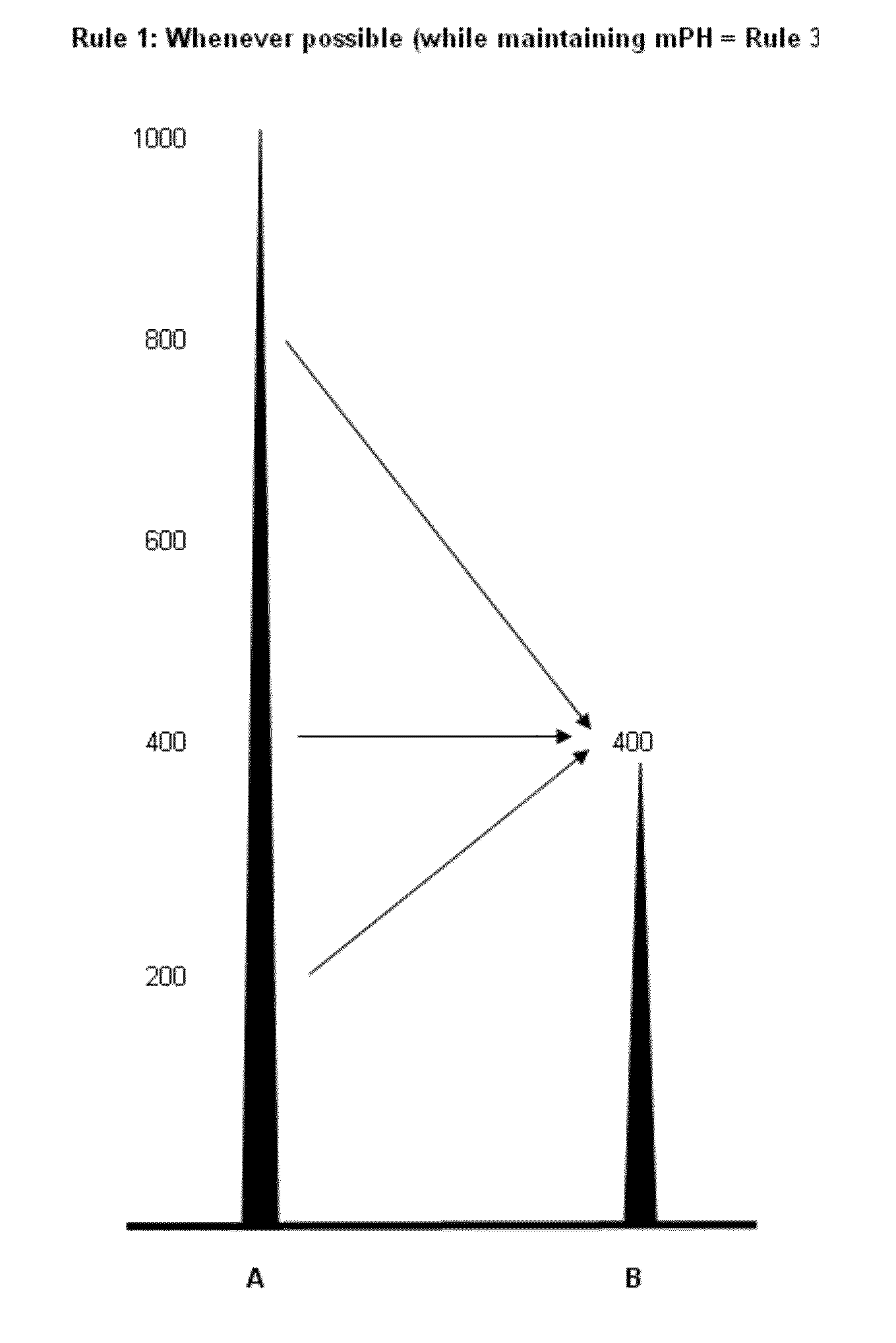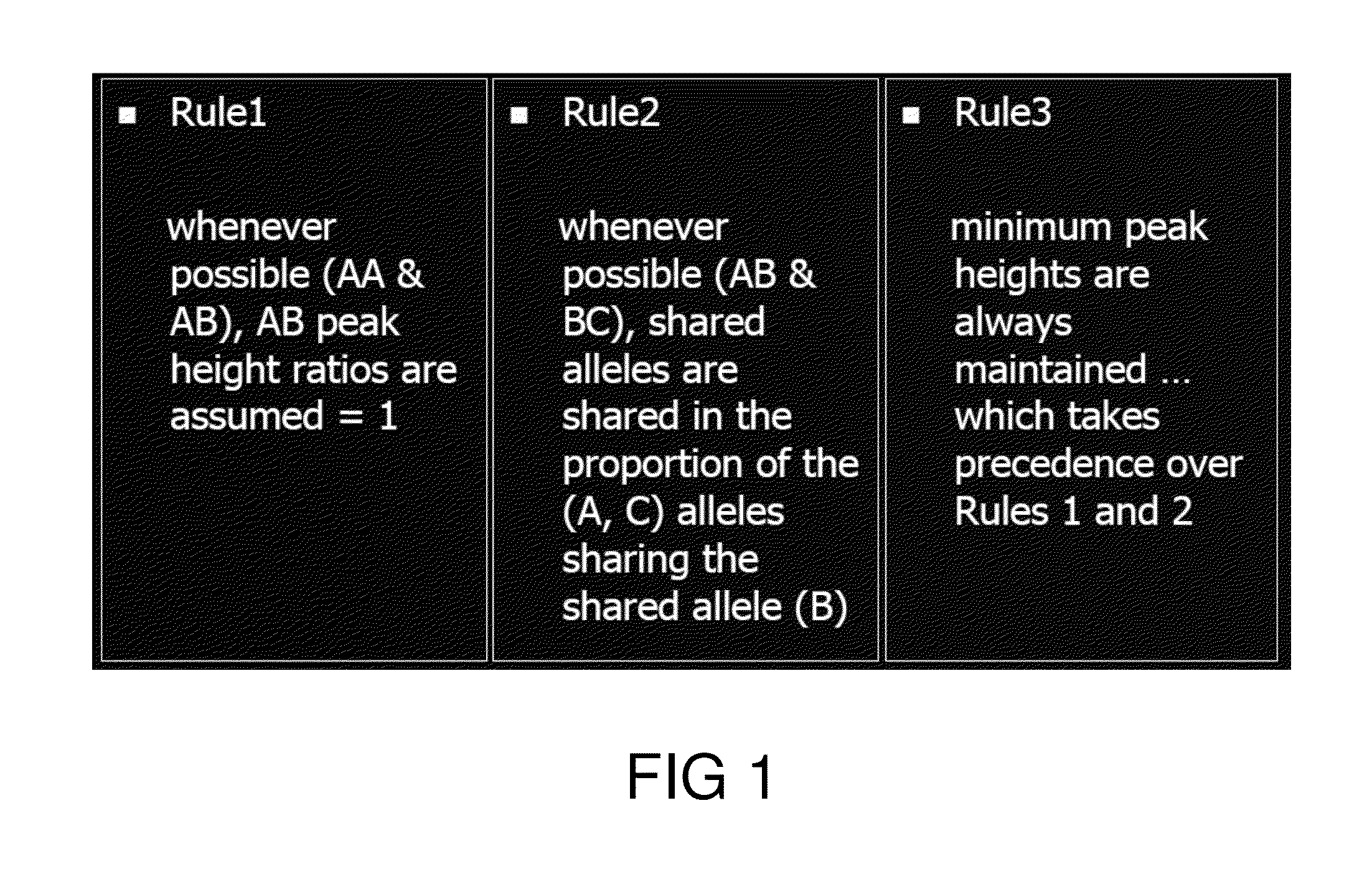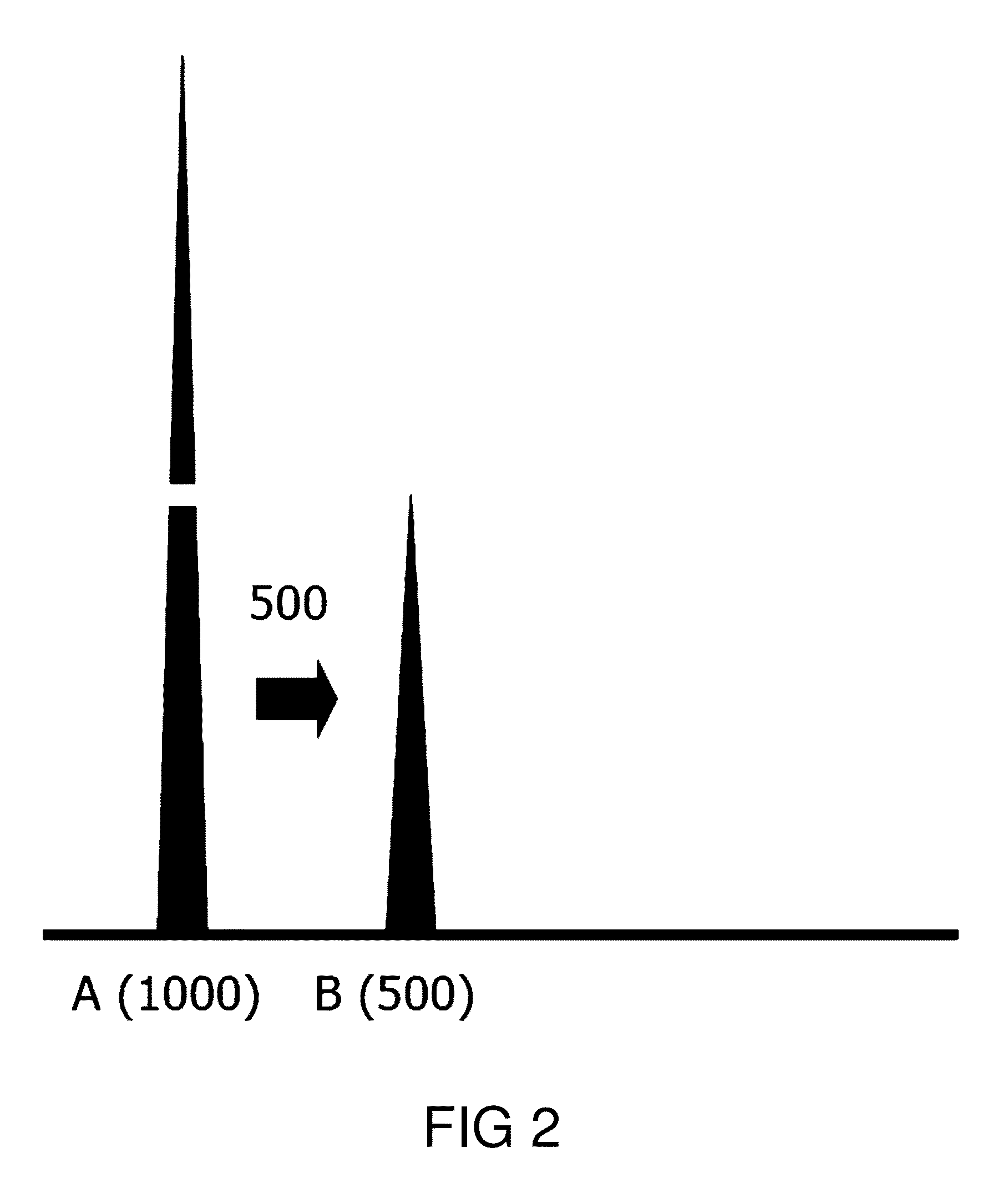System and method for the deconvolution of mixed DNA profiles using a proportionately shared allele approach
a technology of proportional alleles and mixed dna profiles, applied in the field of system and method for deconvolution of mixed dna profiles using a proportionately shared allele approach, can solve the problems of laborious procedure, inability to obtain the perpetrator's gene clearly and directly, and difficulty in forensic scientists' deconvolution of mixed dna profiles contributed by multiple peopl
Inactive Publication Date: 2016-08-11
UNITED STATES OF AMERICA THE AS REPRESENTED BY THE SEC OF THE ARMY
View PDF0 Cites 2 Cited by
- Summary
- Abstract
- Description
- Claims
- Application Information
AI Technical Summary
Benefits of technology
The invention is a system and method for analyzing data from the CODIS database. It includes functions for quality assurance and quality control checks, such as checking for more than two alleles, the X allele, off-scale data, and peak height ratios. The system can also track all controls, ensure concordance of duplicate samples, and generate necessary CMF files for uploading the database. The method and system have the power and flexibility to perform ratio and proportion calculations on every allele combination, regardless of restrictions and filters placed during data analysis. This simplifies the process and allows for the use of customary hardware in forensic laboratories.
Problems solved by technology
Generally, the genotype of the victim is known, but the genotype of the perpetrator cannot be obtained clearly and directly due to the presence of DNA of another person in the sample.
Until now, the deconvolution of mixed DNA profiles contributed by multiple people has been one of the most challenging tasks facing forensic scientists.
Part of the difficulty derives from the large number of possible genotype combinations that can be exhibited by the multiple contributors in the mixed DNA profile.
This procedure was labor-intensive, and yielded a conservative resolution result [7, 8].
In particular it is problematical to apply the method when there are loci which, under the hypothesis being considered of the suspect at hand, appear to have alleles that have dropped out completely and are therefore not detected.
The RMNE method has considerable intuitive appeal but usually entails an unrealistically simple model of DNA evidence and is therefore restricted in its use to unambiguous profiles.
If the genotype of interest is the minor component, then interpretation is more complex since other considerations include drop-out, stutter and masking by major alleles.
This method is limiting and artificial because a finite set of prior-determined mass ratios is used to calculate the fitting residual.
Further, this method is computationally intensive because iterations are involved in searching for the best-fit genotype combinations.
The imposition of the same weight fractions to fit all loci will present a limitation on that set of weight fractions being optimal for all loci.
However, LSD is of limited application when DNA mass proportions are close to 1:1, and 1:2 (with 1:2 peak height ratio also).
Furthermore the technique is only appropriate for two-person mixtures.
This method of mixture interpretation has not been widely adopted because of the complexity of the associated calculations.
However, as a probabilistic driven expert system, PENDULUM is not appropriate for generating data that may be entered into databases such as CODIS which require expert human evaluation prior to submission.
Also, the performance of the system is sensitive to large changes in the scaling factors used to model the variation in the amplification and measurement processes.
This is a serious problem which needs attention [13].
Furthermore, the complexity of the software and the associated calculations make this package undesirable for use in preparing evidence that will have to be explained to laypersons in a typical criminal jury.
However, the presence of additional bands at any particular locus is not necessarily diagnostic of a mixture because other circumstances can lead to extra bands, giving the (wrong) impression of a mixed STR profile.
Method used
the structure of the environmentally friendly knitted fabric provided by the present invention; figure 2 Flow chart of the yarn wrapping machine for environmentally friendly knitted fabrics and storage devices; image 3 Is the parameter map of the yarn covering machine
View moreImage
Smart Image Click on the blue labels to locate them in the text.
Smart ImageViewing Examples
Examples
Experimental program
Comparison scheme
Effect test
example 1
[0190]AA and AA: No peak height ratio or proportion calculations are performed.
example 2
[0191]AA, AA and AA: No peak height ratio or proportion calculations are performed.
example 3
[0192]AA and BB: A (500), B (800)
[0193]t=a+b=500+800=1300
[0194]pAA=a / t=500 / 1300=0.38
[0195]pBB=b / t=0.62
the structure of the environmentally friendly knitted fabric provided by the present invention; figure 2 Flow chart of the yarn wrapping machine for environmentally friendly knitted fabrics and storage devices; image 3 Is the parameter map of the yarn covering machine
Login to View More PUM
| Property | Measurement | Unit |
|---|---|---|
| relative fluorescent | aaaaa | aaaaa |
| peak height | aaaaa | aaaaa |
| peak height ratio | aaaaa | aaaaa |
Login to View More
Abstract
A total forensic DNA casework management system and method for the deconvolution of mixed DNA samples using a novel, 3-rule algorithm to determine the proportional allele sharing of the sample's contributors. The process is fully document, can assess and process DNA anomalies and artifacts, and transforms raw STR data to produce final DNA profile types, peak height ratios, proportions, fitting criteria and associated graphs.
Description
CROSS-REFERENCE TO RELATED APPLICATION[0001]This application is a divisional application of U.S. application Ser. No. 12 / 421,124, filed Apr. 9, 2009 which claims the benefit of priority to Provisional Application No. 61 / 043,693, filed Apr. 9, 2008 the contents of which are hereby incorporated by reference in their entirety.RIGHTS[0002]This invention was made with support from the United States Government, specifically, the United States Army Criminal Investigation Laboratory, the United States has certain rights in this invention.FIELD AND BACKGROUND[0003]The invention is related to methods of resolving a sample containing the DNA of more than one individual into a genotype profile for each individual in the sample.[0004]In forensic science, DNA samples are often derived from more than one individual. When DNA is extracted from a biological stain which contains body fluids or tissue from more than one individual, the result is often a mixed short tandem repeat STR profile. This cons...
Claims
the structure of the environmentally friendly knitted fabric provided by the present invention; figure 2 Flow chart of the yarn wrapping machine for environmentally friendly knitted fabrics and storage devices; image 3 Is the parameter map of the yarn covering machine
Login to View More Application Information
Patent Timeline
 Login to View More
Login to View More Patent Type & Authority Applications(United States)
IPC IPC(8): G06F19/18C40B20/06G16B20/20
CPCC40B20/06G06F19/18C40B60/10G16B20/00G16B20/20
Inventor OVERSON, THOMAS L.
Owner UNITED STATES OF AMERICA THE AS REPRESENTED BY THE SEC OF THE ARMY
Features
- R&D
- Intellectual Property
- Life Sciences
- Materials
- Tech Scout
Why Patsnap Eureka
- Unparalleled Data Quality
- Higher Quality Content
- 60% Fewer Hallucinations
Social media
Patsnap Eureka Blog
Learn More Browse by: Latest US Patents, China's latest patents, Technical Efficacy Thesaurus, Application Domain, Technology Topic, Popular Technical Reports.
© 2025 PatSnap. All rights reserved.Legal|Privacy policy|Modern Slavery Act Transparency Statement|Sitemap|About US| Contact US: help@patsnap.com



